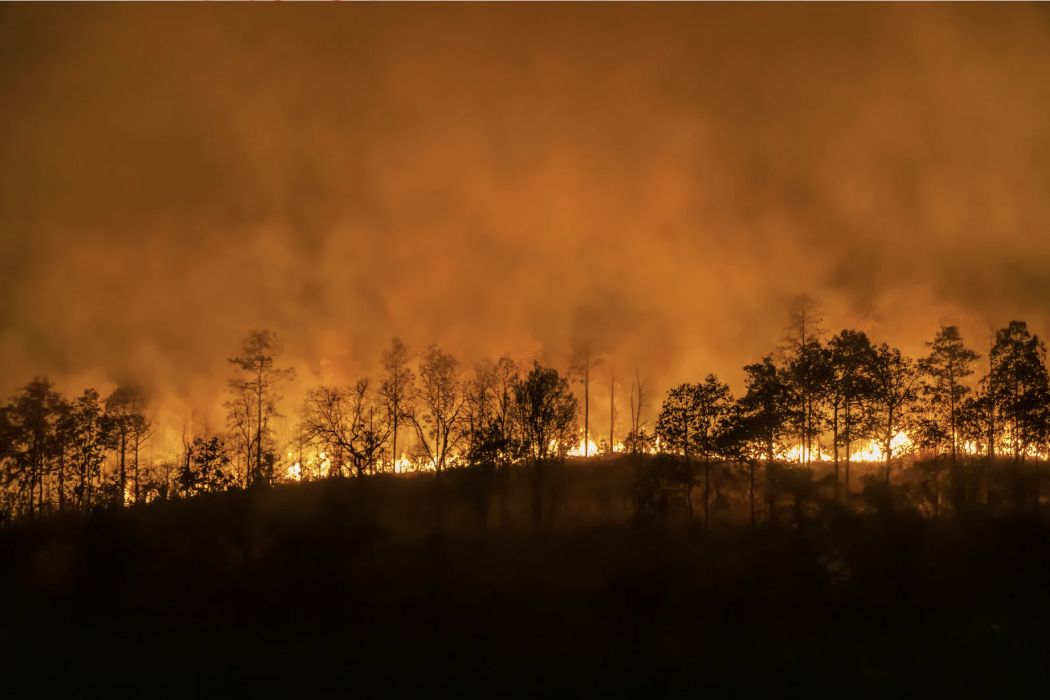
Researchers from the University of Bristol and the Central Laser Facility (CLF) at the Science and Technology Facilities Council (STFC) have discovered why a toxic compound found in wildfire smoke resists natural breakdown by sun light when dissolved in atmospheric water droplets.
The finding explains why 2,4-dinitrophenol (DNP) – a chemical compound toxic to plants, animals, and humans – can remain intact in the atmosphere for longer periods than previously understood.
This persistence may help explain why brown carbon from wildfires contributes to global warming for extended periods.
The research team used the CLF's
Ultra facility to investigate how environmental conditions affect DNP’s lifespan in the atmosphere. It was found that when DNP dissolves in tiny airborne water droplets that make up mist and clouds, it becomes more resistant to the natural degradation by sun light that would normally break it down.
DNP enters the atmosphere through multiple sources, including forest fires. Once airborne as part of brown carbon particles, DNP absorbs sunlight and converts it to heat, contributing to climate change. The compound is also toxic to living organisms, making its extended atmospheric lifetime a dual concern for both climate and public health.
Brown carbon is a brownish smoke released when organic matter like forests burn. It contains dangerous levels of organic chemicals that cause both short and long-term health problems. An estimated 1.5 million people are killed annually because of wildfire smoke exposure.
The research comes as wildfire frequency increases globally, with four of history’s five worst years on record occurring since 2020. Unusual wildfire locations such as the UK and Sweden highlight the expanding impact of climate change.
Beyond wildfires, DNP is also produced by:
- Vehicle emissions from both biofuels and fossil fuels
- Residential heating fires and bonfires
- Controlled agricultural burning
By understanding the mechanisms that extend DNP’s atmospheric lifetime, researchers may identify methods to reduce how long these harmful compounds remain active in the environment. This knowledge could inform both air quality management and climate modelling efforts.
Dr Igor Sazanovich, Senior Scientist at the STFC Central Laser Facility, said:
“Our advanced laser techniques allowed us to understand how DNP behaves at the molecular level when irradiated with light in the atmospheric water droplets. What we discovered was surprising – the droplets actually protect these toxic compounds from breaking them down by sun light. This finding could change how we model the persistence of wildfire pollutants in our climate systems.”
